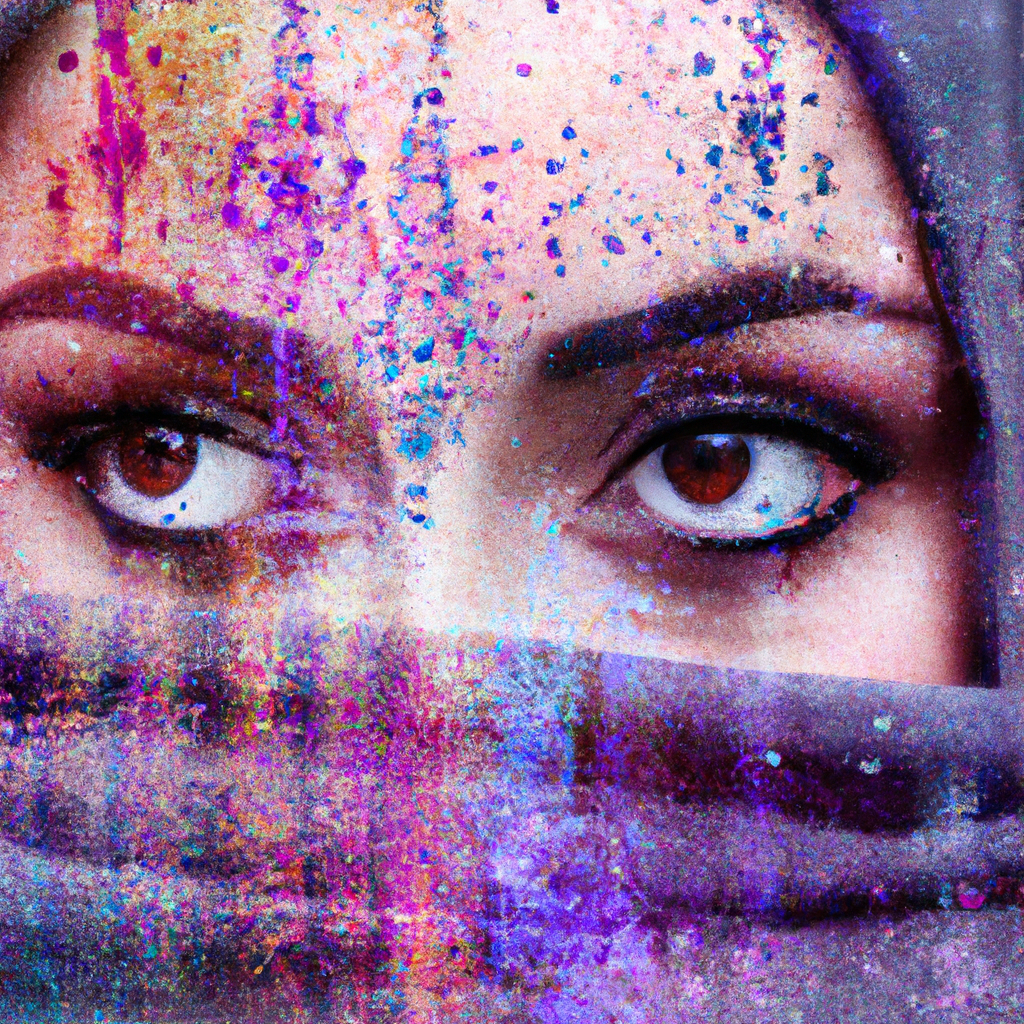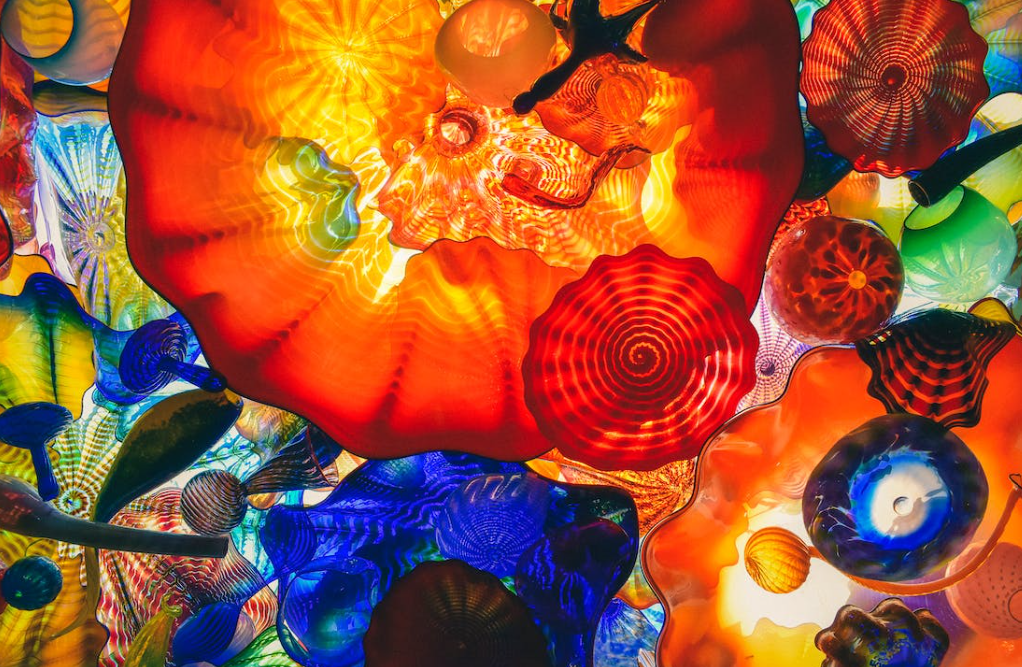In a world where vibrancy and nuances abound, color weaves its captivating spell upon our senses. From the glorious radiance of a sunrise to the melancholic hue of a stormy sky, colors hold the power to transport us to realms beyond our imagination. But did you ever stop to ponder the profound connection between these mesmerizing hues and our own inner world of emotions? Prepare to embark on a journey into the enigmatic realm of emotion and color psychology, where the threads connecting color and mood intertwine to create a tapestry of bewitching allure. Join us as we unravel the mysteries behind the impact of colors on our ever-fluctuating emotions, delving into the intricacies of this captivating relationship. Get ready to witness the enchantment that unfolds when colors pirouette with our feelings, leaving a trail of vibrant footprints in our hearts.

Exploring the Connection: Unveiling the Intricate Relationship between Colors and Emotions
Colors have a profound impact on our emotions, often evoking feelings and sensations that we may not consciously be aware of. The interplay between colors and emotions is a complex tapestry, where different hues can wield the power to stir a variety of feelings within us.
Take red for instance, a color that commands attention and symbolizes both love and anger. It can ignite an intense passion or unleash a fiery rage. On the other hand, blue elicits a sense of calm and tranquility, subtly soothing frayed nerves. Similarly, yellow radiates warmth and happiness, while green represents growth and rejuvenation. Exploring the myriad ways that colors influence our emotional responses is like unraveling a mystery, for each shade can evoke a unique reaction and unveil hidden depths within ourselves.
Unraveling the Emotional Palette: How Different Colors Affect Our Mood and Mental State
Colors: A Kaleidoscope of Emotions
The world around us is a symphony of colors, each hue carrying its own unique energy, influence, and impact on our emotional well-being. From the vibrant warmth of a sunny yellow to the tranquil serenity of a deep blue, the breadth and depth of colors can subtly or dramatically affect our mood and mental state.
Science suggests that chromotherapy, the therapeutic use of colors, can help regulate emotions, enhance creativity, and provide solace during moments of distress. Let’s explore the fascinating tapestry of colors that unfurls within our minds and hearts, unravelling the emotional palette that shapes our daily lives.
Red: Energizing and Passionate
Red, often associated with fire and heat, evokes intense emotions. It symbolizes passion, power, and energy, capable of provoking excitement and drive within us. When we catch a glimpse of ruby red, our heartbeats quicken, our senses sharpen, alerting us to the vitality pulsating within. However, prolonged exposure to this fiery color can also lead to feelings of restlessness and aggression.
Blue: Calming and Soothing
Blue, like the endless skies and gentle ocean waves, envelops us in a sense of calm and tranquility. It has a profound ability to slow down our racing thoughts and alleviate stress, allowing us to find solace in its serene embrace. Associated with trust and loyalty, shades of blue can promote clarity, improve communication, and evoke feelings of security and stability.
Harnessing the Power: Applying Color Psychology to Improve Our Emotional Well-being
Have you ever wondered why certain colors seem to instantly lift your mood, while others leave you feeling drained or anxious? Color psychology explores the fascinating connection between colors and human emotions, offering a powerful tool to enhance our emotional well-being. By understanding how colors can affect our mood and mindset, we can deliberately harness their power to create more harmony and balance in our lives.
1. Warm Colors: Colors like red, orange, and yellow are known for their ability to evoke feelings of warmth and energy. Incorporating these hues into our environment can boost motivation and creativity. Consider adding a red accent wall to your workspace or using vibrant yellow accents in your living area to stimulate productivity and positivity.
2. Cool Colors: On the other end of the spectrum, cool colors such as blue and green have a calming and soothing effect on both the mind and body. These colors promote relaxation and tranquility, making them ideal for bedrooms or spaces where you want to wind down. Integrate cool shades by incorporating soft blue pillows or bringing in potted plants to create a serene oasis within your home.
Creating an Environment That Nurtures Positivity: Color Recommendations to Enhance Mood and Emotions
Color Recommendations to Enhance Mood and Emotions
Creating an environment that nurtures positivity involves various elements, and one crucial aspect is the choice of colors. Colors have the remarkable ability to influence our mood and emotions. By carefully selecting the right hues, you can effortlessly transform any space into a sanctuary of serenity and happiness.
Let’s explore some color recommendations that can help enhance specific feelings:
- Soothing Blue: Blue is renowned for its calming effects. It promotes relaxation and tranquility, making it an excellent choice for bedrooms, meditation spaces, or bathrooms, where a peaceful ambiance is desired.
- Energizing Yellow: Yellow embodies happiness and warmth. It can boost energy levels and stimulate creativity, making it ideal for home offices, kitchens, or living areas where you want a cheerful and vibrant atmosphere.
- Refreshing Green: Green symbolizes nature and renewal, creating a sense of harmony and balance. Incorporating green shades in living rooms, study areas, or gardens can evoke feelings of rejuvenation and growth.
Remember that color preferences and their impact on mood can vary between individuals, so it’s essential to consider personal taste and the specific function of each space. Experimenting with different hues and combinations can lead to a space that fosters an environment of positivity and emotional well-being.
Insights and Conclusions
In conclusion, we find ourselves immersed in a world where color and emotion are intertwined, as if dancing in a mesmerizing symphony. From the vibrant red that ignites our passion to the tranquil blue that soothes our souls, colors hold an undeniable influence over our moods and emotions.
Through centuries of artistic expression, scientific studies, and cultural symbolism, we have unraveled the fascinating connection between color and psychology. We have come to understand that each hue possesses its own unique power to evoke a vast range of emotions within us.
While colors cannot completely dictate our emotions, they undeniably have the ability to nudge us in certain directions. Whether consciously or subconsciously, our surroundings can trigger feelings of joy, sadness, anger, and everything in between.
It is important to note that the impact of colors is highly subjective, as personal experiences, cultural backgrounds, and individual preferences all play a role in how we perceive and react to different shades. Therefore, color psychology is a deeply intricate and nuanced field, with endless nuances and interpretations.
As we navigate through this kaleidoscope of hues, it becomes evident that the impact of color on our emotions is a powerful force that we should harness and apply thoughtfully. From creating harmonious environments to using color schemes strategically in marketing and design, understanding the psychology behind colors empowers us to connect with others on a profound level.
So let us celebrate the enchantment of colors, embracing their ability to inspire, heal, and uplift our spirits. From the warm embrace of an orange sunset to the serene calm of a pastel dawn, let us allow colors to guide us on a journey of emotional self-discovery.
In the end, the beauty lies not only in the magnificent spectrum of colors that surrounds us, but also in the profound impact they have on our inner worlds. So as you go forth, may you be mindful of the vibrant palette that paints your emotions, and may you find solace and inspiration within the ever-changing hues that accompany you on this remarkable human experience.
The power of colors to impact emotions and mood has been discussed by many academics and researchers in a variety of areas – from art to marketing and advertising. Color psychology is the study of how the colors we see cause different reactions within us. This article examines the influence of color on our emotions and mood, and how each individual hue can evoke different emotions.
It has been observed that colors may influence our mental process and state of mind. Certain studies suggest that colors can significantly alter our ability to think, behave, and feel. For instance, green is generally considered to be a calming and serene color, while red can be arousing and arousing. In addition, colors may evoke different emotions, such as happiness, sadness, or anger.
The impact of colors on mood and emotions may be explained by a theory called the “color wheel.” This wheel divides colors into various categories of hue, saturation, and brightness. Each category of hue is associated with a different emotion or feeling. For example, warm colors – red, orange, yellow – are often associated with feelings of joy, while cool colors – purple, blue, etc. – are typically associated with feelings of sadness or fatigue.
In addition to the color wheel, it is also possible to assign emotions to color combinations. Combining different hues may create an entirely new emotional experience. Magenta and turquoise, for instance, can create feelings of tranquility, while pink and blue may evoke feelings of romance and gentleness.
The mood-influencing power of colors can also be extended to decorating and styling choices. Colors can be used strategically to evoke specific emotions in different situations. For example, a bright cheerful yellow might be used in an office space to enhance productivity, while a soothing green may be used in a bedroom to create a calming environment.
In conclusion, understanding the emotional impact of colors is a valuable tool for individuals and businesses alike. By applying the principles of color psychology, designers, marketers, and individuals can use colors to effectively influence emotion and mood. From decorating to advertising, color and its power to impact emotion should be taken into consideration to ensure successful outcomes.







